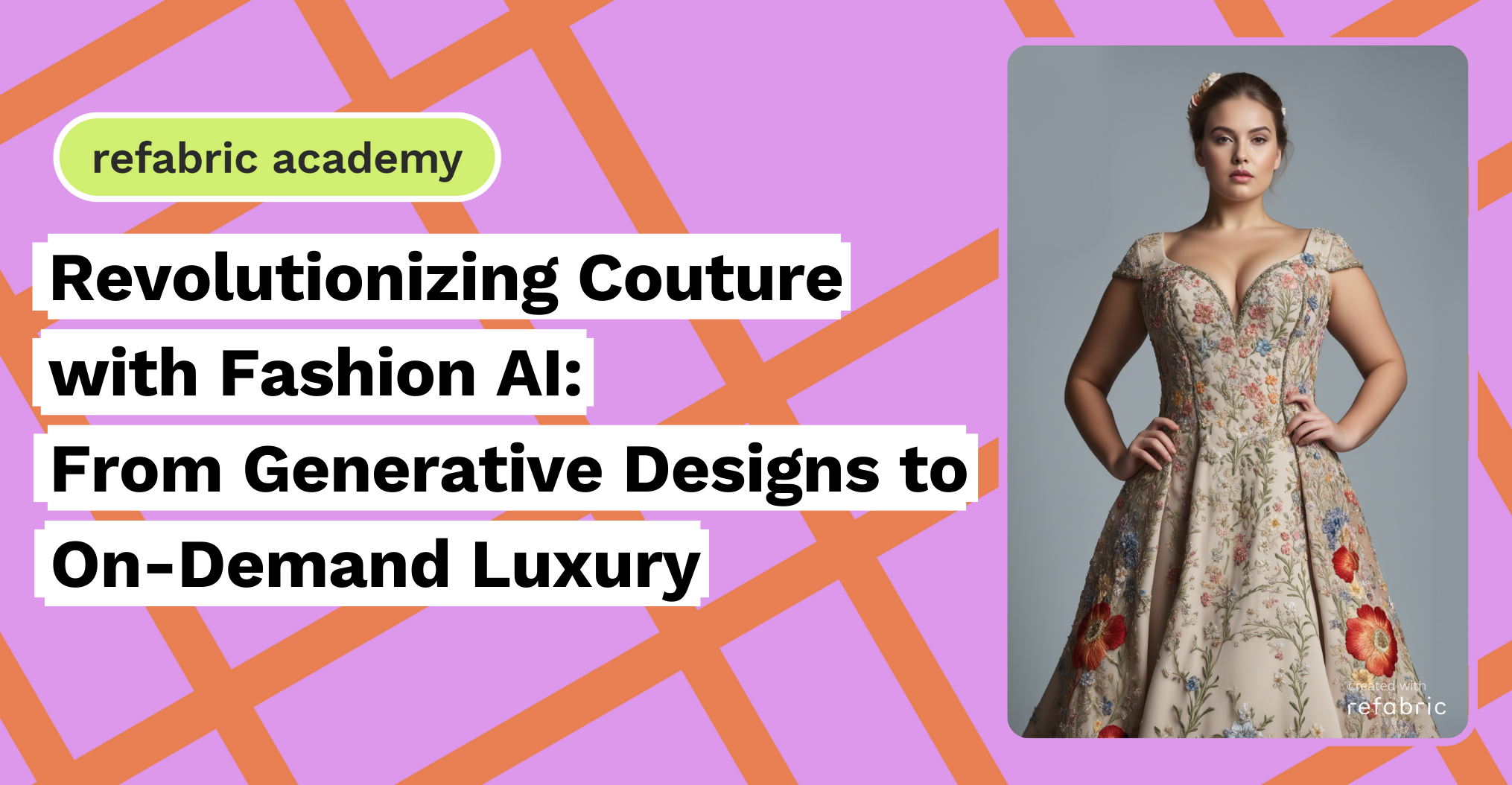Fashion AI is transforming the realm of couture, long synonymous with meticulous craftsmanship, exclusive designs, and unparalleled luxury. Traditionally, couture involves handcrafting garments with precision, often tailored to a single customer. However, as artificial intelligence continues to advance, it is reshaping this once-purely artisanal domain, ushering in a new age of couture that melds tradition with technology. From generative designs that push creative boundaries to on-demand luxury that reimagines exclusivity, fashion AI is revolutionizing haute couture, making it faster, more accessible, and adaptable to the evolving needs of the luxury market.
Generative Designs: A New Frontier for Couture with Fashion AI
One of the most transformative impacts of fashion AI in couture lies in generative design. Powered by machine learning algorithms and trained on vast datasets of images, colors, and patterns, generative AI tools can create intricate designs within seconds, producing pieces that might be impossible to envision using conventional methods. Designers are no longer limited to their own imagination or manual sketching techniques. Instead, they can collaborate with fashion AI to explore new aesthetics, complex forms, and abstract visuals that redefine couture’s artistic limits.
Generative AI allows designers to explore design possibilities at an unprecedented scale and speed. AI-generated motifs and forms are now used to create one-of-a-kind fabrics, unique patterns, and intricate detailing that embody couture’s bespoke essence. Imagine a designer feeding parameters, such as a color scheme or a theme, into an AI system, which then generates hundreds of unique design suggestions. The designer can then refine and select the most inspiring options, combining the machine’s creativity with their artistic sensibility. This fusion produces garments that are not only innovative but also have a distinctly couture appeal.
For instance, companies like Refabric are pioneering this transformation by offering AI-powered tools that aid designers in creating highly customized and avant-garde designs. The process is not about replacing human designers but empowering them with a technological partner that enhances their ability to create.
Reimagining Bespoke Fashion through AI-Powered Personalization
Bespoke fashion, the heart of couture, is rooted in tailoring garments specifically to a client’s unique measurements, preferences, and personality. With fashion AI, this personalization reaches a new level. AI algorithms can analyze vast amounts of data—such as a client’s style history, body measurements, and even their lifestyle—to create designs that are precisely tailored to individual tastes. This shift from manual adjustments to AI-enhanced personalization elevates the experience of luxury fashion to something truly bespoke.
Moreover, fashion AI facilitates a more interactive design process for the customer. Through virtual reality and augmented reality (AR) platforms, clients can preview different design options, fabrics, and cuts before any physical garment is produced. The AI can render real-time adjustments based on the client’s feedback, creating a collaborative experience that adds a new layer to couture’s exclusivity.
In addition, this technology minimizes the time-intensive back-and-forth that typically characterizes bespoke couture. By enabling real-time customization and eliminating the need for multiple fittings, fashion AI not only speeds up the process but also ensures that the final product aligns precisely with the customer’s vision.
On-Demand Luxury: Crafting Couture in Real Time
Traditionally, couture requires significant lead time due to the intricate work involved in crafting each piece by hand. However, fashion AI is paving the way for on-demand couture, where garments can be created in near real-time. On-demand production enables designers to respond to customers’ orders instantly, creating garments tailored precisely to their specifications with a much shorter turnaround. This level of responsiveness enhances the exclusivity of couture, making it more accessible to clients who value both luxury and convenience.
AI-powered design platforms enable this shift by streamlining production processes, reducing waste, and creating a more efficient workflow. For example, generative AI can instantly produce patterns and prints, which can be fed directly into digital or robotic textile printers. This minimizes the labor-intensive steps usually required in creating couture, allowing the focus to remain on intricate detailing and craftsmanship while fashion AI manages the logistics of production.
Furthermore, on-demand couture aligns well with the values of sustainability. In a market increasingly concerned with environmental impact, producing only what is needed significantly reduces waste and aligns luxury fashion with more sustainable practices. With fashion AI helping to optimize the process, designers can achieve sustainable luxury that doesn’t compromise on quality, aesthetic appeal, or exclusivity.
The Future of Couture: A Symbiosis of Art and Technology
The integration of AI into the high-end couture segment doesn’t mean that the art and tradition of couture are fading. Rather, fashion AI serves as an extension of the designer’s toolkit, offering new methods for innovation and expression that can enhance traditional techniques. As fashion AI continues to evolve, we may see couture become even more inclusive, personalized, and reflective of individual identities.
By bridging the gap between bespoke craftsmanship and state-of-the-art technology, AI in fashion design redefines couture for the modern age. Generative designs and on-demand production herald a future where luxury is not only defined by exclusivity but also by adaptability and personalization. This revolution holds the promise of making couture an experience that’s both timeless in its artistry and forward-thinking in its application.
